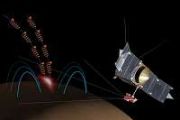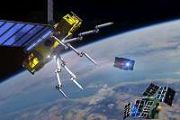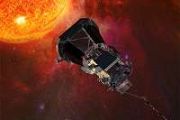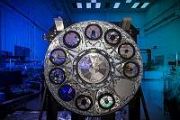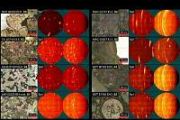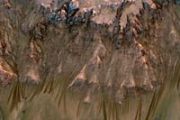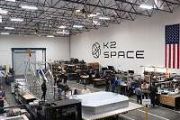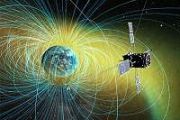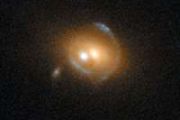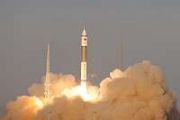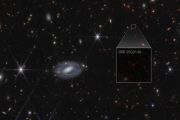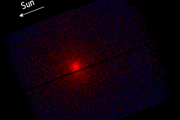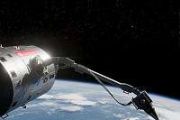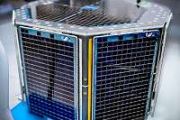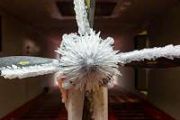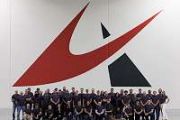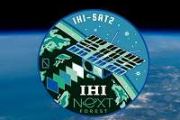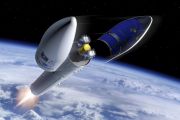
Copernical Team
Firefly Aerospace's first stage explodes before satellite's deployment
 A Firefly Aerospace rocket launched from California crashed into the Pacific Ocean north of Antarctica, failing to place into low-Earth orbit a satellite for Lockheed Martin.
This was the latest in Alpha rocket failures for the Texas-based private company. It has two successes, two failures and two partial failures since its debut in September 2021.
The mission was called "Missio
A Firefly Aerospace rocket launched from California crashed into the Pacific Ocean north of Antarctica, failing to place into low-Earth orbit a satellite for Lockheed Martin.
This was the latest in Alpha rocket failures for the Texas-based private company. It has two successes, two failures and two partial failures since its debut in September 2021.
The mission was called "Missio Two astronauts plan 6 hour spacewalk for ISS upgrades
 Two NASA astronauts plan to participate in a 6-hour, 35-minute spacewalk Thursday to upgrade the International Space Station's power generation capabilities and relocate a communications antenna.
Expedition 73 Flight Engineers Anne McClain and Nichole Ayers are scheduled to leave the ISS at 8 a.m. EDT, according to NASA. NASA will begin live coverage at 6:30 a.m. on NASA+.
They w
Two NASA astronauts plan to participate in a 6-hour, 35-minute spacewalk Thursday to upgrade the International Space Station's power generation capabilities and relocate a communications antenna.
Expedition 73 Flight Engineers Anne McClain and Nichole Ayers are scheduled to leave the ISS at 8 a.m. EDT, according to NASA. NASA will begin live coverage at 6:30 a.m. on NASA+.
They w China pioneers daytime satellite laser ranging in Earth moon space
 Chinese researchers have made a landmark achievement in space navigation by successfully conducting the world's first daytime satellite laser ranging in the Earth-moon region. The breakthrough overcomes long-standing challenges associated with solar interference.
The milestone was reached by a team led by Yunnan Observatories of the Chinese Academy of Sciences (CAS), who on Sunday captured
Chinese researchers have made a landmark achievement in space navigation by successfully conducting the world's first daytime satellite laser ranging in the Earth-moon region. The breakthrough overcomes long-standing challenges associated with solar interference.
The milestone was reached by a team led by Yunnan Observatories of the Chinese Academy of Sciences (CAS), who on Sunday captured Earth from Space: French Guiana
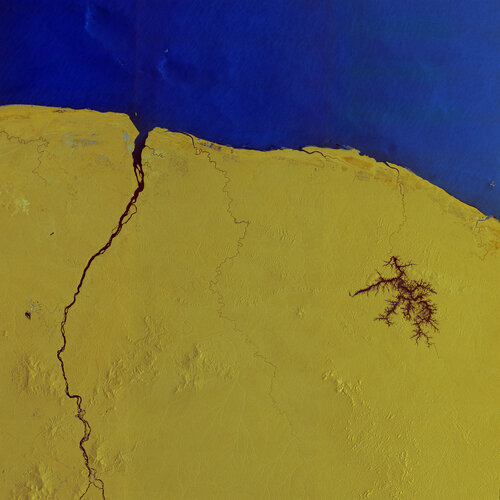 Image:
Copernicus Sentinel-1 captured this radar image over French Guiana – home to Europe’s Spaceport in Kourou, where ESA’s Biomass mission is being prepared for liftoff on 29 April onboard a Vega-C rocket.
Image:
Copernicus Sentinel-1 captured this radar image over French Guiana – home to Europe’s Spaceport in Kourou, where ESA’s Biomass mission is being prepared for liftoff on 29 April onboard a Vega-C rocket. Replay: Biomass launch coverage
 Video:
01:54:04
Video:
01:54:04
ESA’s state-of-the-art Biomass satellite launched aboard a Vega-C rocket from Europe’s Spaceport in Kourou, French Guiana. The rocket lifted off on 29 April 2025 at 11:15 CEST (06:15 local time).
In orbit, this latest Earth Explorer mission will provide vital insights into the health and dynamics of the world’s forests, revealing how they are changing over time and, critically, enhancing our understanding of their role in the global carbon cycle. It is the first satellite to carry a fully polarimetric P-band synthetic aperture radar for interferometric imaging. Thanks to the long wavelength of P-band, around 70 cm, the
Celebrating 20 years of KUBIK: a cornerstone of life science research in space

On 19 April 2025, ESA marks the 21st anniversary of KUBIK, an incubator for biological samples in space. This versatile and enduring facility has advanced our understanding of biology in space for the last two decades.
Ignis science

ESA project astronaut Sławosz Uznański-Wiśniewski will conduct a variety of science experiments and technology demonstrations during the Ignis mission. While the International Space Station is a home away from Earth for astronauts, it is, above all, a state-of-the-art laboratory in orbit. Its unique microgravity environment allows researchers to study phenomena that are impossible to replicate on our planet.
Space Systems Command and NRO launch Phase 3 mission under new contract
 The U.S. Space Force's Space Systems Command (SSC), in collaboration with the National Reconnaissance Office (NRO), has successfully completed the launch of the NROL-145 mission aboard a SpaceX Falcon 9 rocket. Liftoff occurred at 5:29 a.m. from Space Launch Complex 4 East at Vandenberg Space Force Base in California.
The mission marks a significant milestone as the NROL-145 launch was sec
The U.S. Space Force's Space Systems Command (SSC), in collaboration with the National Reconnaissance Office (NRO), has successfully completed the launch of the NROL-145 mission aboard a SpaceX Falcon 9 rocket. Liftoff occurred at 5:29 a.m. from Space Launch Complex 4 East at Vandenberg Space Force Base in California.
The mission marks a significant milestone as the NROL-145 launch was sec Space Systems Command bolsters satellite processing for future launches
 The United States Space Force's Space Systems Command (SSC) has awarded a National Security Space Launch (NSSL) Space Vehicle Processing Commercial Solutions Opening (CSO) contract to Astrotech Space Operations (ASO), aiming to enhance commercial satellite processing capabilities at Vandenberg Space Force Base in California by 2028.
"This $77.5 million CSO award is a public-private partner
The United States Space Force's Space Systems Command (SSC) has awarded a National Security Space Launch (NSSL) Space Vehicle Processing Commercial Solutions Opening (CSO) contract to Astrotech Space Operations (ASO), aiming to enhance commercial satellite processing capabilities at Vandenberg Space Force Base in California by 2028.
"This $77.5 million CSO award is a public-private partner U.S. Space Force Deploys New Research Payloads to ISS for Technological Advancements
 The U.S. Space Force's (USSF) Space Systems Command (SSC), working alongside NASA, has successfully launched the Space Test Program-Houston 10 (STP-H10) mission, delivering six cutting-edge experimental payloads to the International Space Station (ISS) aboard SpaceX's Commercial Resupply Service (CRS)-32 mission.
A collaborative effort involving SSC, NASA, the U.S. Naval Research Laborator
The U.S. Space Force's (USSF) Space Systems Command (SSC), working alongside NASA, has successfully launched the Space Test Program-Houston 10 (STP-H10) mission, delivering six cutting-edge experimental payloads to the International Space Station (ISS) aboard SpaceX's Commercial Resupply Service (CRS)-32 mission.
A collaborative effort involving SSC, NASA, the U.S. Naval Research Laborator 

